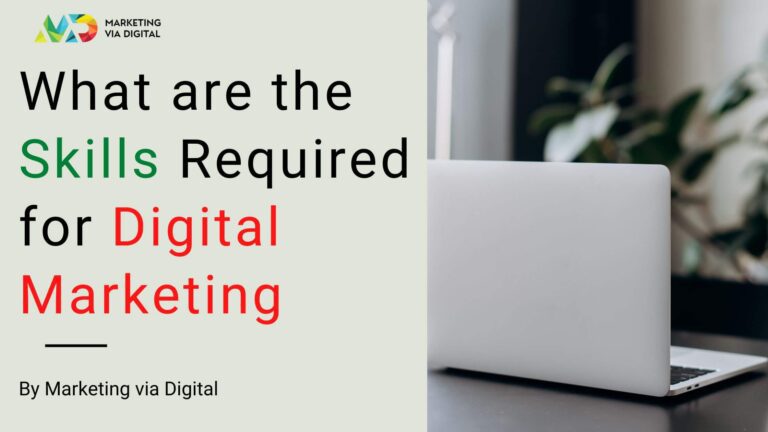
Starting an online store in India’s growing e-commerce world needs a solid plan. This e-commerce website development guide covers all key points. It helps you pick the right platforms and follow local laws. The e-commerce website checklist 2025 is perfect for new business owners. It makes sure your site is easy to use, follows the law, and can make money.
Key Takeaways
- Start by setting clear goals and knowing who your customers are. This fits India’s unique market needs.
- Use the e-commerce website checklist 2025 to focus on designs that work well on phones and load quickly.
- Add safe payment methods and SSL certificates to protect your customers’ info and payments.
- Make sure you follow GST rules and have good privacy policies to meet Indian laws.
- Work on SEO and social media to get more visibility in India’s busy online market.
Planning Your E-commerce Website Development Journey
Starting a successful online store needs a clear plan. Whether you sell clothes, gadgets, or food, e-commerce website development requires knowing your business and customers. This online store website guide offers steps for entrepreneurs in India.
Define Your Business Model and Target Audience
Choose a business plan that fits your aims. You could sell directly to people (B2C), to businesses (B2B), or through payments. Find out how old, how much money, and what your public likes.
For example, younger city dwellers might like mobile-friendly sites. On the other hand, people in rural areas might need easier checkout processes.
Market Research in India’s E-commerce Landscape
Consider competitors such as Flipkart and Amazon India to identify potential. Use Google Trends or social media to see what is popular. Ask yourself, what do customers dislike about current sites?
Highlighting what makes your store different can help you stand out.
Set SMART Goals and Timelines
SMART goals help you stay focused. For instance, aim to launch a women’s fashion store in six months, growing by 20% each month. Divide your project into stages: design, development, testing, and soft launch.
Adjust your timeline based on your team’s abilities and resources.
Choosing the Right E-commerce Platform for Indian Entrepreneurs
Starting an online store begins with picking the right platform. E-commerce website tips suggest looking at cost, growth, and local needs. Here are the top picks for Indian business owners.
Platforms like WooCommerce, Shopify, Magento, Instamojo, and Zepo have their own benefits. Look at them based on important points:
- WooCommerce: Flexible, open-source, and supports GST plugins. Strong with local plugins.
- Shopify: All-in-one solution, easy setup. Basic localization requires customization.
- Instamojo: Localized for India, multilingual support. Optimized for Indian payments and shipping.
Think about payment options like RazorPay or PayU and shipping with Delhivery or FedEx. Zepo makes building an e-commerce site for business easier with Indian features. Make sure your platform supports languages like Hindi, Tamil, or Gujarati.
Technical skills matter: Magento needs coding, while Shopify is easy to use. Hosting in India boosts speed and follows data laws. Start small, test, and grow as your business does. The best platform fits your budget, audience, and future plans.
Essential Design Elements for a Successful Online Store Website
A good online store website guide focuses on making users happy. It turns visitors into loyal customers. For Indian shoppers, the design should meet global standards and meet local tastes. Follow these tips to make a site that appeals to many and increases sales.
Mobile-Responsive Design for Indian Shoppers
India has over 700 million smartphone users. They expect websites to be fast and easy to use. Make sure your site works well on mobile devices, even on slow connections.
Features Included:
- Image Size: Under 150 KB per product image.
- Font Size: 16px minimum for readability
- Loading Time: Fast-loading website.
Navigation That Speaks Locally
Use names like “Fashion” and “Electronics” for categories. Also, search filters should be added to identify what Indians like. Include languages like Hindi, Tamil, and Bengali to reach more people. Shopify and WooCommerce have plugins to help with this.
Product Pages That Convert
Use high-quality images with 360° views and zoom. This builds trust. Also, list product benefits in local terms. For example:
- “Handloom sarees from Varanasi” instead of generic fabric descriptions
- “Quick delivery in 48 hours” for urgency
Checkout Process Trust Builders
Show cash-on-delivery options clearly. Display shipping costs and GST breakdowns in real time. Use trusted payment logos like Paytm and PhonePe. Keep forms short. Add testimonials like “10,000+ satisfied customers in Mumbai” to build trust.
E-commerce Website Development Checklist for New Business Owners: Technical Requirements
Building an e-commerce site for business needs a strong technical base. First, get reliable hosting and pick a domain name that appeals to Indian shoppers. Here’s how to handle the main technical steps in e-commerce website development.
Setting Up Secure Hosting and Domain Registration
Opt for a domain ending with .in or .co.in to gain local trust. BigRock and GoDaddy India make it easy. Look at hosting providers focused on the Indian market:
- MilesWeb: Free domain, SSL included
- HostIndia: 24/7 Support, India-based servers
Ensuring Website Speed and Performance Optimization
Boost load times with these tips:
- Compress images with TinyPNG.
- Enable browser caching for local data storage.
- Use CDNs like Cloudflare to lower latency.
- Minify CSS/JS files to reduce file sizes.
Implementing SSL Certificates and Data Security Measures
Get the padlock icon’s SSL certificates (e.g., Let’s Encrypt). Focus on:
- PCI DSS compliance for payment data safety
- Data encryption for customer info
- Regular security checks
Building for Scalability as Your Business Grows
Make sure your tech supports growth. Think about:
- Cloud-based databases like AWS or Firebase
- Auto-scaling servers for traffic peaks
- API integrations for future tools
Pro tip: Test backups and recovery plans often to avoid downtime. These steps make your online store secure, fast, and ready for the future.
Payment Gateway Integration and Financial Considerations for Indian Markets
When creating your e-commerce website checklist 2025, focus on payment options that appeal to Indian buyers. Many Indians prefer digital payments, but some stick to Cash on Delivery (COD) and UPI. This online store website guide shows how to mix convenience with safety.
Choosing the right payment gateway is the first step. In India, you have several good options:
- RazorPay (low fees, UPI integration)
- CCAvenue (trusted for high-volume transactions)
- PayU India (supports multiple currencies)
- Stripe (ideal for cross-border businesses)
Integrate UPI and digital wallets like Paytm/PhonePe for 70% of India’s mobile users. For COD, work with logistics that collect payments. Always follow RBI rules: use two-factor authentication and don’t store payment data. Keep an eye on chargeback rates and check transactions weekly to avoid issues.
For sales across borders, check if your gateway supports multiple currencies. Update your e-commerce website checklist 2025 to include fraud tools and GST tax checks. You need a fast payment process to get people to trust you and help your business grow.
Legal Requirements and Compliance for E-commerce Businesses in India
Starting a compliant online store means knowing India’s laws. The e-commerce website checklist 2025 focuses on legal steps like GST registration and privacy policies. It’s about following rules and gaining customer trust.
GST Registration and Tax Management
All e-commerce sites need GST registration based on their legal type. Know tax rates for items like clothes (5%) and electronics (18%). Make sure invoices show GST numbers. Use plugins for tax calculations at checkout. Missing tax filings can cost up to ₹10,000 a month.
Privacy Policies and Data Protection
Make clear privacy policies for data use, following India’s Personal Data Protection Bill. State what data you collect and how it’s kept safe. Add a link to the terms of service on every page to avoid legal issues.
Return Policies and Regulatory Certifications
Follow Consumer Protection Rules with at least 7-day returns for most items. Show certifications for food (FSSAI), electronics (BIS), and cosmetics (CDSCO). Have a returns section with prepaid labels for easy returns.
Remember e-commerce website tips like trademarking logos and copyrights for content. Work with legal experts to check contracts and ads. Being compliant is key to lasting success.
Marketing and SEO Strategies to Launch Your E-commerce Website in 2025
Starting your e-commerce website development needs a solid marketing plan. To make your page easy to find, click on the link below. Put keywords in your products’ titles and ensure your site loads quickly and works well on phones.
Indian users love mobiles, so your site must work well on them. This is key to success.
SEO for India means using local keywords. Tools like Google Keyword Planner help find these. Use terms like “buy smartphones online in Delhi” to attract local buyers.
- Social Media: Use Instagram for pictures, WhatsApp Business for chats, and Facebook groups for specific interests.
- Content Marketing: Write guides like “How to Choose the Best Laptop for Students” to attract visitors.
- Email Campaigns: Get people to sign up with offers. Send them emails about their carts after they buy them.
Paid ads on Google Ads and Facebook can reach local people. Spend 10–15% of your budget on ads to see what works best. Work with smaller influencers for better results at lower costs.
Partner with big sites like Amazon India and Flipkart to get more eyes on your site. But keep your brand’s look and feel the same. Staying consistent in SEO and social media helps grow your business without breaking the bank.
Conclusion: Building Your E-commerce Success Story in India
Your journey to a thriving e-commerce business starts with a clear plan. The e-commerce website checklist 2025 guides you through every step. This includes choosing platforms like Shopify or BigCommerce and following GST rules.
Make sure your site works well on mobiles, as India’s smartphone users are growing. Also, focus on fast loading speeds and secure payment options like Paytm or Razorpay.
Success depends on building trust. Show clear return policies, transparent prices, and reliable delivery. This is key in tier-2 cities where delivery can be tough.
Start with a basic product and improve it based on what customers say. Brands like Nykaa and Meesho grew by focusing on user experience and local needs.
Use the ecommerce website development checklist to help launch your site. But stay open to change. Stay current with SEO trends, interact on social media, and adapt to changing consumer preferences.
Whether you sell handicrafts or electronics, focus on quality and easy service. This will help you stand out in India’s competitive online market.
Your ecommerce website checklist 2025 is more than a guide—it’s your base. You can grow a scalable business by combining technical setup with customer focus. Start today, and watch your brand grow with India’s digital economy.
FAQ
What is included in the e-commerce website development checklist for new business owners?
The checklist covers key steps. It includes defining your business model and conducting market research. You also need to set realistic goals and budgets.
Choosing the right e-commerce platform is essential. You should also focus on design elements, technical requirements, and payment gateway integration. Legal compliance and marketing strategies are also necessary.
How do I choose the right e-commerce platform for my business?
Consider your budget and technical capabilities. Think about scalability needs and currency support. Make sure it works with local payment gateways and shipping providers.
Platforms like Shopify and WooCommerce are good options. Indian-specific options like Instamojo also offer features that are specific to local preferences.
What are some essential design elements for creating a successful online store?
A mobile-responsive layout is key. Ensure navigation is easy and product images and descriptions are optimized. A trustworthy checkout process is also important.Consider local shopping behaviors and preferences. This will enhance the customer experience.
What technical requirements should I consider for developing my e-commerce website?
Secure hosting and domain registration are must-haves. Speed and performance optimization are also important. SSL certificates ensure data security.Make sure your site can grow with your business. This includes handling more traffic and inventory.
How do I integrate payment gateways suitable for the Indian market?
Choose payment gateways like RazorPay and CCAvenue. Understand fees and settlement periods. Know what Indian consumers prefer, like Cash on Delivery and UPI.Comply with local regulations when using these payment methods.









